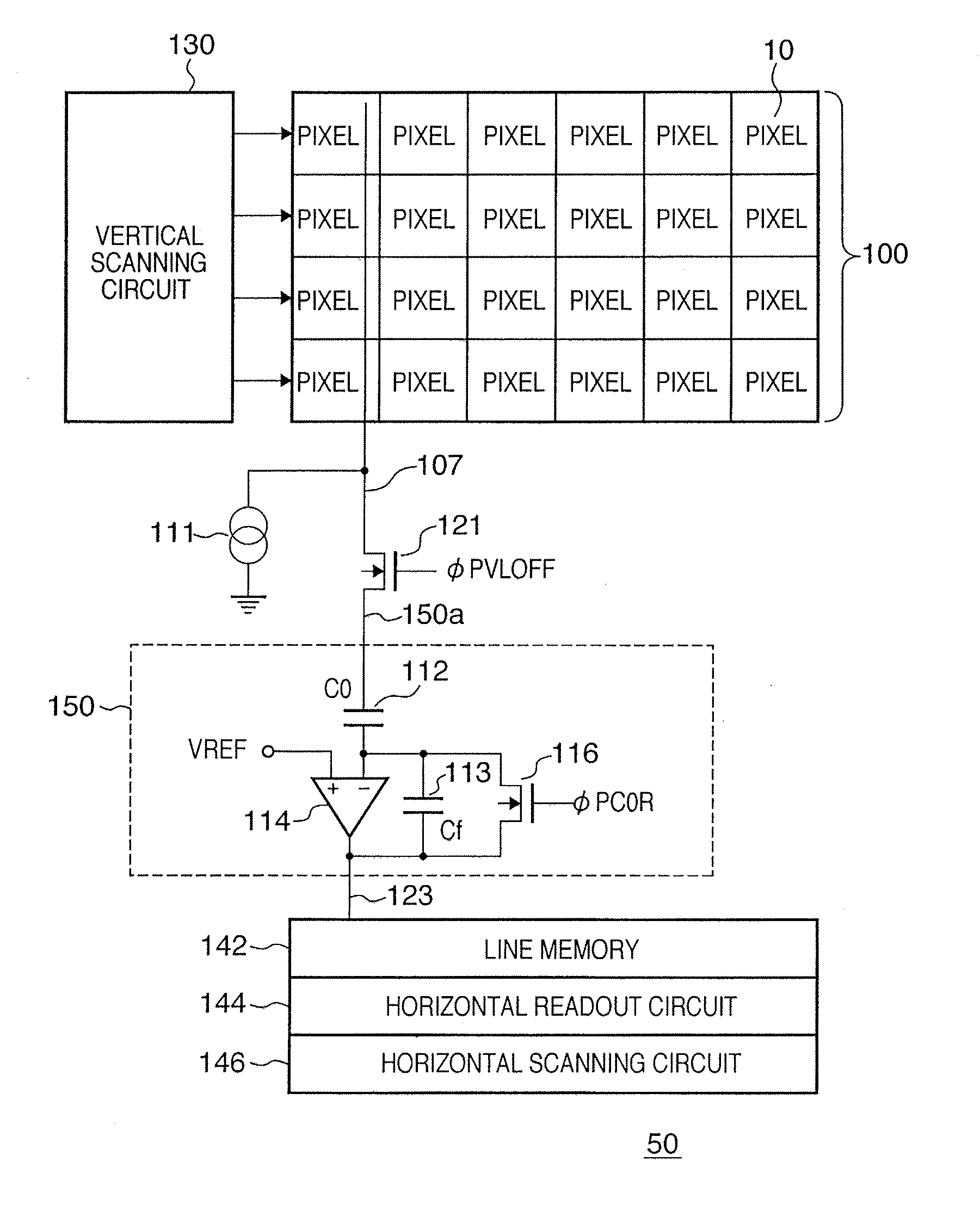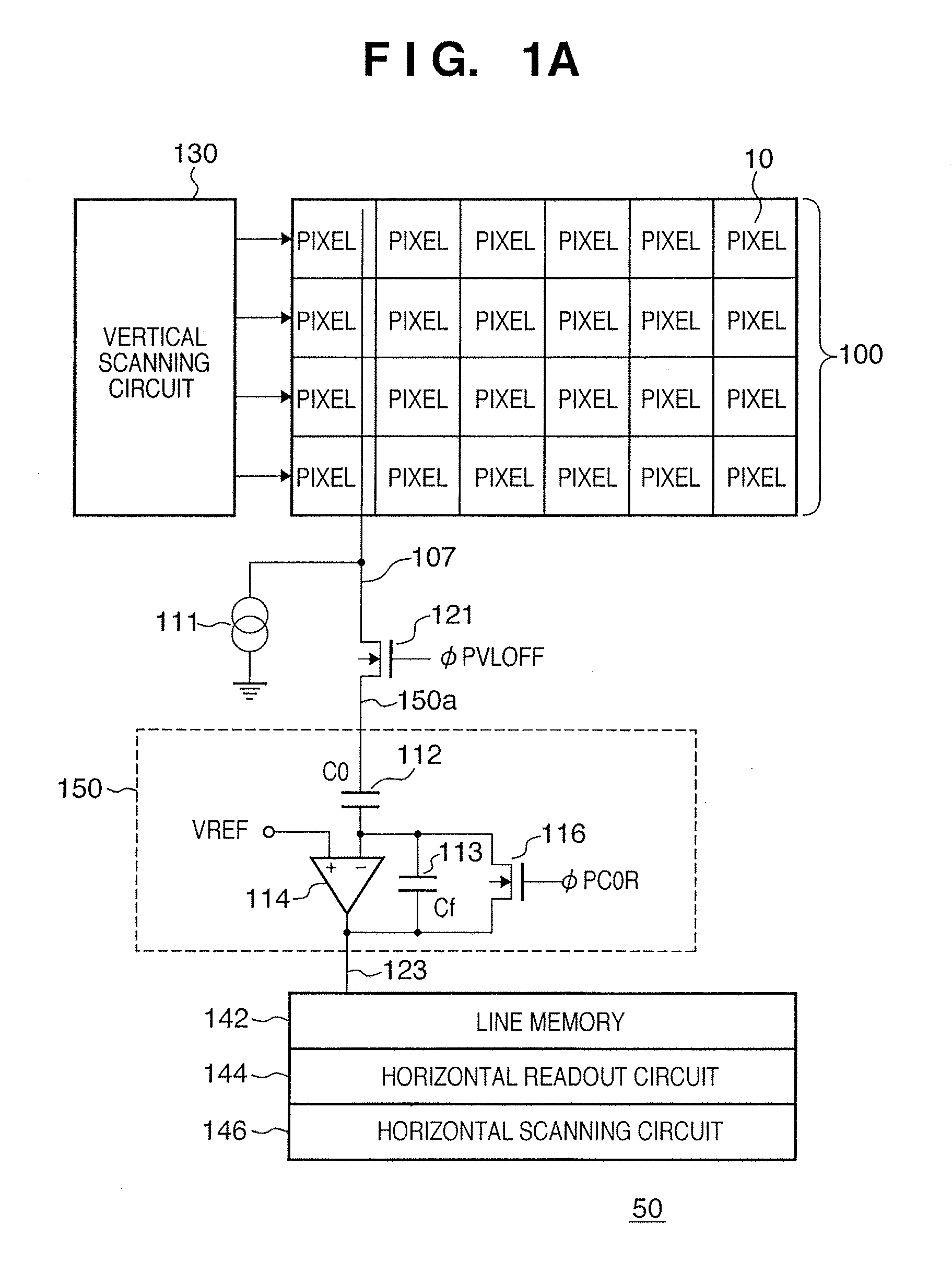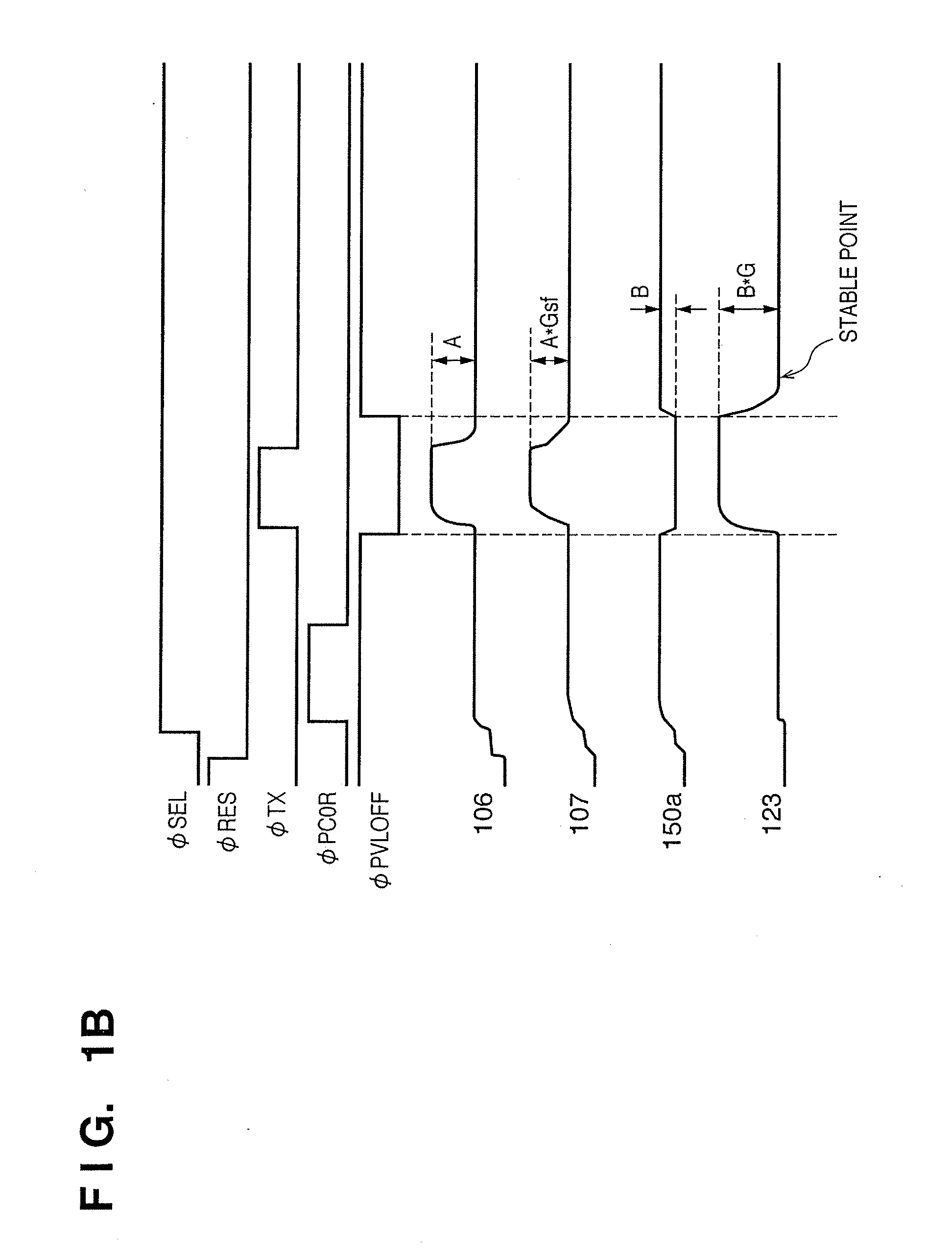Photoelectric conversion device and imaging device
- Summary
- Abstract
- Description
- Claims
- Application Information
AI Technical Summary
Benefits of technology
Problems solved by technology
Method used
Image
Examples
first embodiment
[0026]FIG. 1A is a diagram schematically showing the arrangement of a photoelectric conversion device (solid-state image sensing device) according to the first embodiment of the present invention. A photoelectric conversion device 50 shown in FIG. 1A includes a pixel array 100 in which pixels 10 each shown in FIG. 6 are arrayed in a matrix. A vertical scanning circuit 130 sequentially selects (scans) a plurality of rows which form the pixel array 100. The pixel 10 which belongs to the selected row outputs a signal to a vertical signal line 107 corresponding to the column to which the pixel 10 belongs. FIG. 1A shows only one vertical signal line 107 for the sake of simplicity.
[0027]The pixel 10 shown in FIG. 6 includes a photodiode 101, transfer switch (MOS transistor) 102, reset switch 103, amplification transistor 104, and row selecting transistor 105. The transfer switch 102 transfers a charge generated by the photodiode 101 to a floating diffusion (FD) 106 when a transfer pulse φ...
second embodiment
[0043]FIG. 2A is a diagram schematically showing the arrangement of a photoelectric conversion device (solid-state image sensing device) according to the second embodiment of the present invention. Details which are not particularly referred to here can follow the first embodiment.
[0044]A photoelectric conversion device 60 in this embodiment has the arrangement in which an isolation switch 121 in the first embodiment is replaced with an isolation switch 221. The isolation switch 221 is a parallel circuit of an NMOS transistor 221n and a PMOS transistor 221p having the same size. The gate of the NMOS transistor 221n receives an isolation signal φPVLOFF which is the same as that in the first embodiment, and the gate of the PMOS transistor 221p receives an inverted isolation signal / φPVLOFF serving as the inverted signal of the isolation signal φPVLOFF. With such arrangement, the isolation signal φPVLOFF and the inverted isolation signal / φPVLOFF having the opposite logical levels can ...
third embodiment
[0046]FIG. 3A is a diagram schematically showing the arrangement of a photoelectric conversion device (solid-state image sensing device) according to the third embodiment of the present invention. Details which are not particularly referred to here can follow the first embodiment.
[0047]A photoelectric conversion device 70 according to this embodiment has the arrangement in which an isolation switch 121 in the first embodiment is replaced with an isolation switch 321. FIG. 3B is a circuit diagram showing the arrangement of the isolation switch 321. In this embodiment, the difference between the ON resistances of an NMOS transistor and a PMOS transistor is considered. Generally, the ON resistance of the PMOS transistor is two to three times that of the NMOS transistor. When using these transistors for a transmission switch, the PMOS transistor advantageously transmits a high potential, and the NMOS transistor advantageously transmits a low potential. Hence, when the NMOS and PMOS tran...
PUM
 Login to View More
Login to View More Abstract
Description
Claims
Application Information
 Login to View More
Login to View More - R&D
- Intellectual Property
- Life Sciences
- Materials
- Tech Scout
- Unparalleled Data Quality
- Higher Quality Content
- 60% Fewer Hallucinations
Browse by: Latest US Patents, China's latest patents, Technical Efficacy Thesaurus, Application Domain, Technology Topic, Popular Technical Reports.
© 2025 PatSnap. All rights reserved.Legal|Privacy policy|Modern Slavery Act Transparency Statement|Sitemap|About US| Contact US: help@patsnap.com



